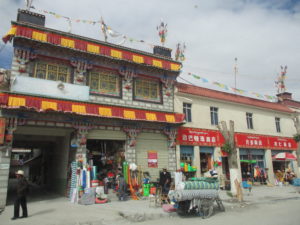DEVELOPMENT AS A TIBETAN HUMAN RIGHT
Blogging on the one human right trumping all other rights: 1 of 2
What do we think when “China” and “human rights” arise in the same sentence? A storm cloud assembles: coercion, torture, denial, repression, closure, censorship, bullying. China’s record as a member of the UN Human Rights Council is one of excluding dissenting voices, even trying to have the term “human rights defender” banned, and actual defenders stripped of credentials to speak. It’s all negative, a comprehensively negative stance. Global talk of human rights in China is denounced as illegitimate interference in China’s sovereign realm, for the ulterior motive of weakening China. In this era of nationalism, that’s potent. Not a good look, especially at a time when China is going through its Universal Periodic Review of its overall eligibility to remain a member of the UN Human Rights Council.
China’s record of denial, staging displays of fury at “interfering in internal affairs” might suggest defensiveness. Not at all. Far from being on the defensive, new era China energetically promotes other rights which have been neglected, positioning itself as upholder of these new rights, which supposedly take priority over the issues Tibetans, Uighurs and global human rights monitors constantly raise.
China these days, on the initiative, goes beyond. China finances much of the UN peacekeeping budget, and supplies a high proportion of peacekeepers. China tries to redefine human rights, in 2017 proposing a new UN General Assembly resolution making development both the most important of all human rights, and the precondition for the enjoyment of all other human rights. The resolution passed, though not without considerable dissent, and is now official UN policy. What to make of this proactive initiative?
A NEW HUMAN RIGHT
The right to development is perhaps the least recognised human right, so China’s focus is welcome. Critiques of familiar human rights concepts emphasize the privileged status the international system gives to the civil and political rights of the individual, going all the way back to 1948, to the Universal Declaration of Human Rights. By comparison, collective social and economic rights get little publicity, little attention. Some argue that this reflects the Euroamerican bias of human rights, which accentuates the individual and ignores the collective, refusing to see inequality and distributive justice as human rights issues. Aryeh Neier, a founder of Human Rights Watch argued that social and economic rights simply don’t exist, are not legitimate concepts, and the whole idea is a utopian call for redistributive justice on a global scale.
Given this imbalance, China’s initiative is a corrective. Concepts of human rights were split by the ideological divide of the Cold War from 1948 on. Aryeh Neier, who denied the validity of economic and social rights says: “Because it is apparent that some countries with limited resources would be hard pressed to accord their nationals all the economic rights to which proponents of such rights consider them to be entitled, another economic right has also emerged, though it has not yet been incorporated in any global agreement: the right to development. This carries with it the implication that, as a matter of right, the resources of wealthy countries should be used to raise the standard of living of poor countries so as to enable them to meet the economic and social rights of their populations. An obvious justification for seeking such a transfer is that a significant part of the wealth of the wealthy is derived from their exploitation of the resources of the rest of the world. Hence, calling for a right to development does no more, in the view of some of its proponents, than provide a measure of redress for those who have not shared in those advances or who may have been impoverished in the process.” [1]
 In today’s world of selfish nationalisms, no such right to redistribution of wealth from rich to poor countries is recognised. Neier argues that any right to development is by definition a collective right and thus unenforceable: “It is difficult to imagine how an individual, on her own, could enjoy the right to development. It is only possible to imagine that, in common with her fellow citizens of a poor country and of other poor countries, she would benefit from the transfer of knowledge, skills, and resources that would enhance opportunities for the population as a whole to achieve greater economic and social well-being. Moreover, it is difficult to identify a particular individual or a finite group of individuals who could be held accountable in such a way as to secure someone else’s development. Enforcement of this right could take place only through the collective action of an entire society, or of many societies acting together under the direction of global authorities to bring about the necessary transfer of resources.”
In today’s world of selfish nationalisms, no such right to redistribution of wealth from rich to poor countries is recognised. Neier argues that any right to development is by definition a collective right and thus unenforceable: “It is difficult to imagine how an individual, on her own, could enjoy the right to development. It is only possible to imagine that, in common with her fellow citizens of a poor country and of other poor countries, she would benefit from the transfer of knowledge, skills, and resources that would enhance opportunities for the population as a whole to achieve greater economic and social well-being. Moreover, it is difficult to identify a particular individual or a finite group of individuals who could be held accountable in such a way as to secure someone else’s development. Enforcement of this right could take place only through the collective action of an entire society, or of many societies acting together under the direction of global authorities to bring about the necessary transfer of resources.”
 Thus the right to development is a Marxist utopian fantasy, meaningless in reality. Neier’s career, as an eminent human rights advocate, for many years running Human Rights Watch and the Open Society Institute, gave him opportunity to dismiss economic rights to development, and to focus his organisations exclusively on individual rights.
Thus the right to development is a Marxist utopian fantasy, meaningless in reality. Neier’s career, as an eminent human rights advocate, for many years running Human Rights Watch and the Open Society Institute, gave him opportunity to dismiss economic rights to development, and to focus his organisations exclusively on individual rights.
Hence China’s 2017 initiative. China, like the Soviet Union before it, long saw economic rights as primary, its’ UN resolution confirmed its’ long standing position.
TIBETAN WOOL AS A GLOBALISED COMMODITY: THE FORGOTTEN HISTORY
Thus it is worth asking: what has China done to implement the right to development, in Tibet?
A standard approach to development, anywhere in the underdeveloped areas of the world, is to start with comparative advantage, which means identifying the existing strengths and specialisations of the area, based on its unique circumstances. If the aim is growth, you start with what you have and build on it. In Tibet, the obvious comparative advantage of the traditional mode of production has always been wool, dairy and other livestock products.
A century ago, Tibetan wool was traded, via yak caravans through Kalimpong to Calcutta port and onto ships to the woollen mills of England. Tibetan wool from Amdo was traded all the way down the Yellow River, changing hands many times, to the port city of Tianjin, and then to the woollen mills of New York. The Tibetan economy in the 1920s was globalised.
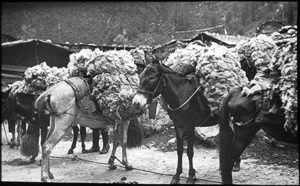
From the viewpoint of the upland nomads of the remote hinterland, wool buyers a century ago came from three directions. Some wool still went overland to the northwest, as it had for centuries, to Russia, boosted, in the 1930s, by Soviet railway extensions towards what is now the border of Kazakhstan with Chinese Xinjiang. But most of the surplus, especially sheep and goat wool, either went south to the British market or east to the American and German markets. Either way, there was a long haul overland before reaching Calcutta or Tianjin ports, and the trade routes were frequently disrupted by conflict, but a highly globalised trade nonetheless persisted. It took a World War to halt this trade.
As much as 90 per cent of Tibetan government revenue in Lhasa in early decades of the 20th century came from taxing the wool trade.[2] Lhasa was the market hub for wool destined for South Asian and European markets, from all over the high plateau. However, the wools produced not only in the uplands but also in the arid lowlands of Mongolia, Gansu, Ningxia and Xinjiang, were all exported to New York via Tianjin, reaching a peak of 24,000 to 28,000 tons a year in the 1920s.[3]
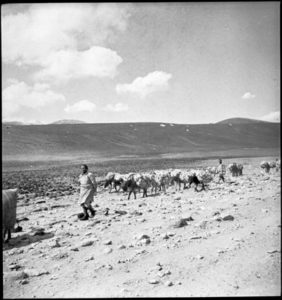
“The Chinese trade is interested primarily in the export of Chinese articles to the frontier peoples, in return for which it handles wool as one of the methods of realising on investments.”[4] Rasmussen describes in detail the remote source regions and varying qualities of the wool, which Chinese traders routinely adulterated by paying to have dirt rubbed into it to increase the weight, transport costs, and selling price.
This trade was hit hard by the Great Depression of the 1930s, by technological change in the American mills and by an American decision to admit competing Argentinian wool, but the trade had thrived for decades. For China, “wool has been among the first six or seven exports and in 1933 and 1934 moved up to fourth and third positions respectively.”[5] By the mid to late 1930s, Japanese conquest of Chinese ports and wool producing hinterlands meant that Japanese trading houses increasingly dominated the wool trade, and that Japan’s ally Nazi Germany increasingly became its destination.[6] It was only when global war erupted that inner Asia ceased being the world’s primary source of carpet wool, to be replaced eventually in the post-war world by New Zealand. Today New Zealand is so dominant that the Tibetan carpet industry of Nepal, its top export earner, is heavily reliant on sourcing much of its inputs from NZ.
REVOLUTIONARY CHINA AND THE WOOL INDUSTRY
In the 1950s and 1960s, this was the obvious starting point of development, to strengthen dairy and livestock production, improve breeding, veterinary care, processing, separation of the wool clip so finer grades of wool could be sold separately at higher prices. Shanghai woollen mills badly needed Tibetan wool.
A standard approach to development would give priority to constructing local roads to link remote areas to distant markets, establish animal feeding stockyards in market towns to keep animals to be sold in good condition, provision of loans to small producers to intensify production, buy a truck for greater mobility, and provide herders with weather reports warning of adverse conditions. These are all obvious ways of linking producers and consumers, adding value, enhancing existing strengths, implementing the right to development.
China did almost none of this. Although it did want herd size to rise and greater productivity, the herders were disempowered by compulsory communisation in which each herder produced their quota or starved as work points were deducted and thus rations withheld.
Not only did China fail to develop Tibet in the 1950s and 1960s, subsequent decades saw investment monopolised by urban infrastructure, highways, hydro dams, power grids, oil pipelines, railways, all designed to extend the reach of the state rather than to link primary producers to China’s markets. Investment grew greatly, but not in rural Tibet, except for enclaves of mineral extraction. For a few years, in the 1980s, local county governments set up wool processing factories which could and should have added value to nomad wool production, but these township and village enterprises all went broke, having spent too much on building wool scouring plants too big for local supply, leading to ruinous competition, mounting indebtedness as loan finance could not be repaid, desperate cheating of the woollen mill customers by weighing wool bales down with stones that damaged woollen mill machinery. It all collapsed, the woollen mills switched to synthetic substitutes for wool, or to importing their wool from Australia, and the Tibetans were on their own, poorer than ever.[7]
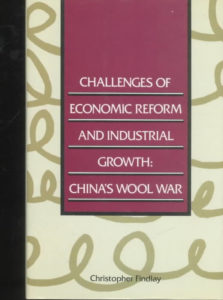 Since the shameful end of the 1980s “wool war”, as economists call it, China has poured money into Tibet but very little into the traditional productive economy; instead concentrating capital expenditure on the dams, highways, extraction zones and urban areas, all providing employment for speakers of standard Chinese, not Tibetans, except as casual, unskilled labourers, usually with no right to reside long term in the towns they built.
Since the shameful end of the 1980s “wool war”, as economists call it, China has poured money into Tibet but very little into the traditional productive economy; instead concentrating capital expenditure on the dams, highways, extraction zones and urban areas, all providing employment for speakers of standard Chinese, not Tibetans, except as casual, unskilled labourers, usually with no right to reside long term in the towns they built.
Despite China’s ideological privileging of the right to development over other rights, China failed to develop the Tibetan economy or build wealth creation opportunities for Tibetan livelihoods or intensify Tibetan comparative advantage.
China remains officially convinced it has brought development to Tibet, even if the Tibetans fail to be suitably grateful for China’s civilising mission. How is such mutual misunderstanding possible? Maybe the most vivid answer is to reprint Emily Yeh’s 2013 ethnography of what development with Chinese characteristics actually means, on the ground:
Science and Technology Transfer Day
The transfer of science and technology by the state to Tibetan villagers is intended to be accomplished both directly, through state-sponsored efforts, and indirectly, by way of the villagers’ proximity to Han migrants. In February 2001 I had the opportunity to observe science and technology brought to “the masses.” Called “The Three Go Down to the Countryside” ( sange xiaxiang ), this was a mandatory annual event in which Lhasa work units traveled to a rural area to promote (1) science and technology, (2) education, and (3) hygiene, with the overarching goal of alleviating poverty.
That year’s program, which was with the Tibetan medical hospital and several institutions of agriculture and animal husbandry, was held in a township seat only a short drive from Lhasa. We arrived at the township government’s courtyard to see a banner hanging across the entrance proclaiming this a day for science and technology. In front of the stage and spanning its width was a multicolored balloon arch on which “Rely on Technological Progress, Realize a Leap Forward in Development” was emblazoned in Chinese. Two balloons on either side carried a similar slogan in Tibetan.
Around the courtyard, work units had set up booths with exhibits. Staff members from the hospital and the animal husbandry bureau were dressed in white lab coats, giving them an air of knowledge and authority. The Vegetable Research Institute displayed poster boards showing a variety of flowers, vegetables, and greenhouses, as well as packets of seeds, potato cultivars, and pamphlets about vegetable cultivation. Another exhibit included small glass display cases holding varieties of barley seeds.
Some young children had come early. The villagers drifted in, and by the time the program began there were some six or seven hundred audience members. Sometime later, a group of uniformed soldiers marched in and sat to the right of the stage, followed after a few minutes by a truckload of maroon-robed nuns who sat to the left of the stage, directly facing the soldiers. Thus was created a visually striking bifurcation of space.
The event began with speeches by several work unit party secretaries. One spoke about the need to be civilized (wenmin ), the importance of education, and how modernizations could be achieved only through the use of science and technology. Others spoke of the urgent need to oppose superstition and to use science instead.
After the speeches began a program of more than twenty songs and dances by staff members from various Lhasa work units. The program was interrupted about two-thirds of the way through when TAR deputy party secretary Tenzin arrived to present gifts to the children of a nearby orphanage. A television and a video-CD player were given to the township, and a refrigerator to an impoverished household. Development and poverty relief had arrived in the form of gifts.
At the conclusion of the performances, the audience, who had sat patiently throughout the day, converged on the display booths around the courtyard. The largest crowd, pushing and shoving, formed around the Tibetan hospital’s table, where doctors read pulses and gave out medicine. Villagers mobbed the other tables as well. Far too many bodies crowded chaotically around the small spaces for any actual conversation or dissemination of information to take place.
Instead, this was an occasion for the sport of free sample collection. At each table were hundreds of pamphlets about greenhouse vegetable production—only a small number of which were in Tibetan and so were useless to most of the villagers— which the visiting technical experts from Lhasa threw to the crowd.
The Vegetable Research Institute had brought several cartons of its newly developed brand of spicy fries. Two staff members climbed onto the table and threw their packets of greasy potatoes and Chinese-only pamphlets into the crowd, and the villagers fought over them eagerly.
This was “technology transfer” Chinese-Tibetan style: the great science giveaway. The villagers then sat in circles for the highlight of the day, a picnic of dried meat, vegetables, baskets of bread, and jugs of chang . During the feast, the agricultural experts recruited audience members to sing.
After two more hours of merriment, the event was over and the villagers returned home with their free samples. Staff members from Lhasa’s work units were also free to go, having fulfilled their annual duty to disseminate science and technology to the “ignorant masses.” The villagers had fulfilled their duty as well, to attend the day of performance, food, and drink, and to bear witness to the presentation of gifts.
Emily T. Yeh, Taming Tibet: Landscape Transformation and the Gift of Chinese Development, Cornell University Press. (2013), 161-2
[1] Aryeh Neier, The International Human Rights Movement: A History, Princeton University Press. (2012), 62-3
[2] Wim van Spengen. Tibetan border worlds : a geohistorical analysis of trade and traders, Kegan Paul International, 2000, 107-119
[3] A. H. Rasmussen, The wool trade of Northern China, Pacific Affairs, 9 #1, 1936, 60-68.
H Lee Shuttleworth, A wool mart of the Indo-Tibetan borderland, Geographical Review, 13 #4, 1923, 552-558 Downloadable via JSTOR.
H.D. Baker, British India, US Department of Commerce, 1915
C.E.D. Black, The trade and resources of Tibet, Journal of the East India Association 41 (48), 1908, 1-26
W.S. Hamilton, Notes on Tibetan trade, Government of Punjab, 1910
Luc Kwanten, Indian trade marts in Tibet, Courrier de l’Extreme Orient, Brussels, 3 (29), 1969, 45-53
Trade with Tibet, Indian trade journal, 6, 1907, 610-12 and 728-9; and 8, 1908, 344-5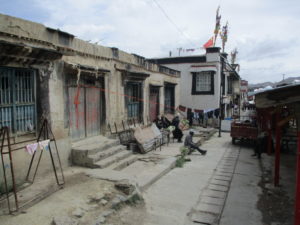
[4] Rasmussen, The wool trade, 68
[5] Frederick V. Field, China’s foreign trade, Far Eastern Survey, 4 #5, March 1935, 33-40
[6] Kurt Bloch, Germany replaces U.S. as outlet for north China wool, Far Eastern Survey, 7 #25 December 1938, 300-01
[7] John Longworth, Colin Brown and Scott Waldron, Chinese domestic wool production, China Agricultural Economics Group, University of Queensland, 2004, 35
Zhang Xiaohe, Lu Weihguo, Sun Keliang, Christopher Findlay and Andrew Watson, The ‘wool war’ and the ‘cotton chaos’: fibre marketing, 120-143 in Ross Garnaut et al eds., The third revolution in the Chinese countryside, Cambridge University Press, 1996, table 10.10, 136



